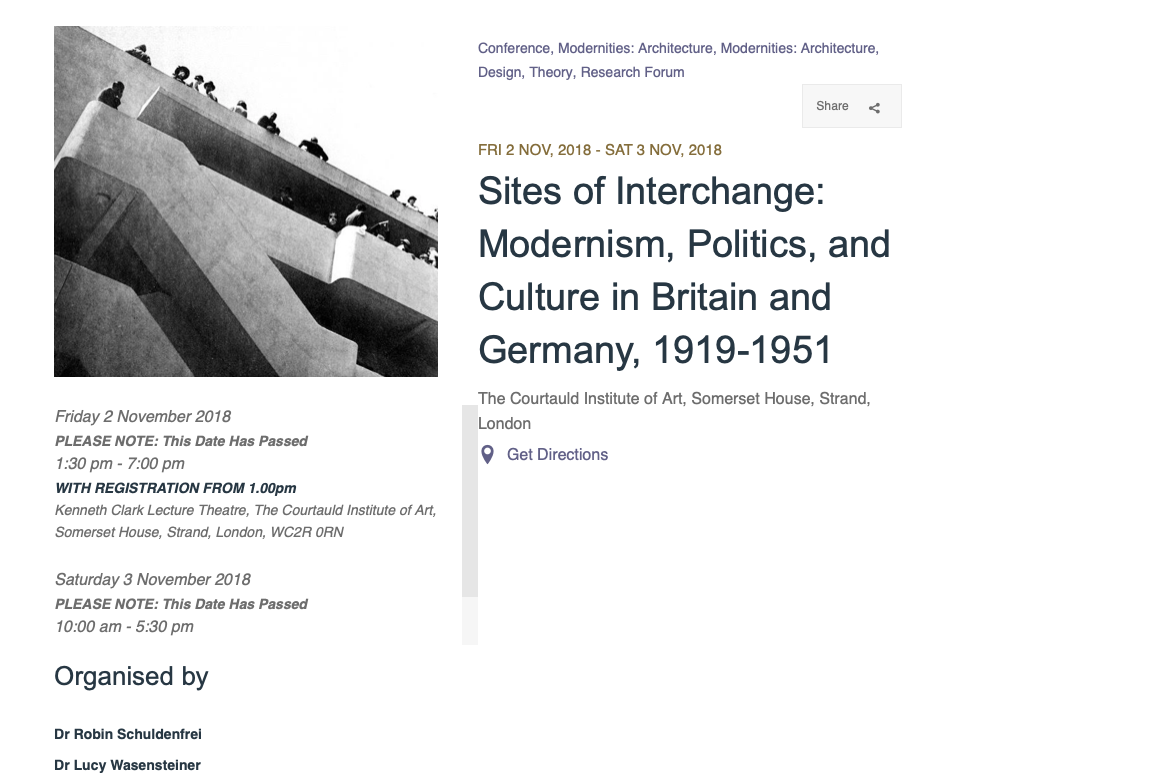Sites of Interchange in London
Burcu Dogramaci gave a lecture at the conference “Sites of Interchange : Modernism, Politics, and Culture in Britain and Germany, 1919-1951” on 2/3 November 2018 at the Courtauld Institute in London. The conference is organized by Robin Schuldenfrei and Lucy Wasensteiner.

The lecture of Burcu Dogramaci focused on London of the 1930s and 1940s, when many emigrants, amongst them Walter Gropius, László Moholy-Nagy and Ernö Goldfinger, lived and worked in Hampstead. 14,000 refugee lived in the Hampstead area by 1940. This leads to questions about the importance of neighborhoods for the life and work of emigrants. Proximity and distance to other emigrées but also access to infrastructures might have impact on the ‘arrival’ in exile. The lecture maps contact zones in London such as art institutions, social venues and private homes, zones where exiled and local artists met and worked together or joint exhibitions organized. The London example shows how actors (the émigrés), the output of their work (the art objects and concepts) and the relevant urban places interacted, conceiving them as part of a dense network. The overall aim of the lecture is twofold: to inform exile studies with an understanding of how networks function in a metropolitan or urban setting, while integrating perspectives on life in exile into urban studies.
A video of the lecture is published here: https://www.youtube.com/watch?v=LTCOmr2_a1w.

